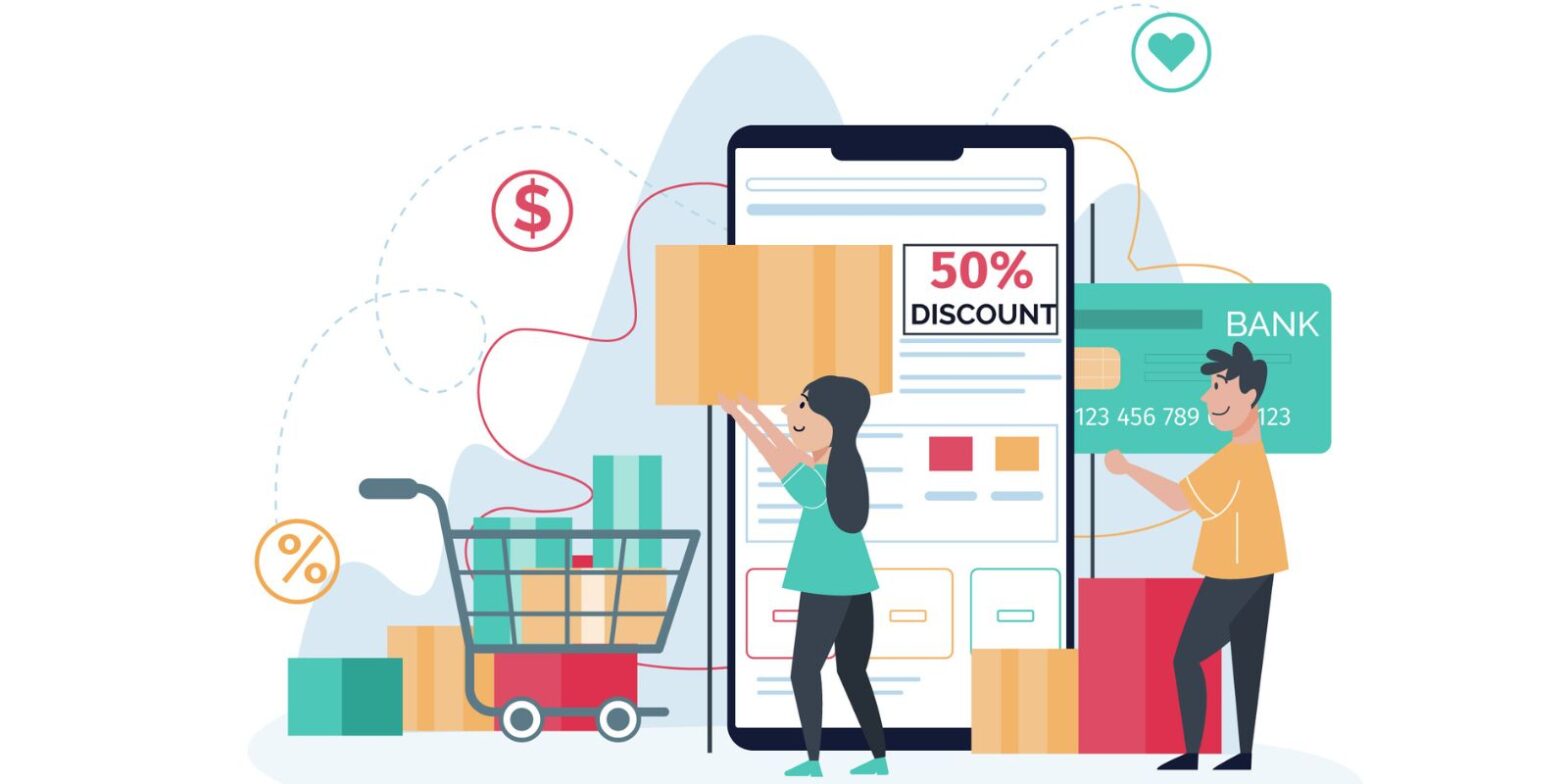Introduction
Mobile commerce, known as m-commerce, is the process of purchasing and selling goods, services, or products using mobile devices like smartphones and tablets. It is a branch of e-commerce that emphasizes digital transactions conducted on portable devices.
M-commerce has gained significant popularity due to the widespread use of mobile devices worldwide. With people relying on their smartphones for various activities throughout the day, including shopping, making appointments, banking, entertainment, and more, the demand for mobile applications has risen. This trend has prompted businesses to recognize the potential of mobile devices as a platform for conducting online transactions and reaching customers on the go. Consequently, mobile app development has become an essential part of modern business strategies, allowing companies to create effortless and user-friendly experiences designed specifically for mobile users.
Types of M-commerce
- Mobile Shopping: Users can browse and purchase products or services from e-commerce apps or websites using their mobile devices. Platforms like Amazon, Flipkart, and others offer mobile shopping experiences.
- Mobile Banking: This involves using mobile apps authorized by banking institutions to conduct financial transactions such as transferring funds, paying bills, and managing accounts.
- Mobile Payments: Mobile wallets and digital payment apps such as Paytm, PhonePe, Google Pay, and others enable users to make payments in physical stores or online without using cash or cards.
While m-commerce is a subset of e-commerce, there are differences between the two. E-commerce encompasses all electronic commerce activities conducted on the Internet, including transactions, payments, logistics, and information exchange. M-commerce specifically focuses on these activities carried out on mobile devices.
Advantages
- Improved Customer Experience: M-commerce provides convenience and accessibility for customers, allowing them to shop anytime and anywhere using their smartphones. It offers mobility and reachability through push notifications, and location-based services, enhancing the overall shopping experience.
- Maximum Growth Potential: M-commerce continues to grow rapidly, with an increasing number of users adopting mobile shopping. The percentage of retail sales attributed to m-commerce is projected to rise significantly in the coming years, indicating ample opportunities for businesses.
- Omnichannel Capabilities: Mobile devices enable businesses to implement an omnichannel strategy, integrating various channels such as physical stores, social media, and marketplaces. This approach creates a seamless and consistent brand experience across all touchpoints.
- Multiple Payment Options: M-commerce enables businesses to offer various payment methods, including digital wallets and one-click checkout options, providing customers with flexibility and convenience during the buying process.
Challenges
Constant Need for Optimization
Mobile commerce requires regular optimization to adapt to changing customer behaviour and advancements in technology. It’s essential to ensure that mobile apps and websites are user-friendly, fast, and convenient to navigate.
Too Many Payment Methods
The abundance of payment platforms and mobile wallets can make it challenging for online retailers to manage their businesses globally. Offering too many payment options may lead to decision paralysis for customers.
Price Comparison
Customers can easily compare prices across different stores using their smartphones. This can lead to customers choosing competitors if they find lower prices elsewhere. Overcoming this challenge involves emphasizing the value proposition of products and differentiating from competitors.
Security Concerns
Security is a significant concern in m-commerce. Customers may feel hesitant to make online purchases through mobile devices due to concerns about the security of their personal information and payment details. Businesses need to prioritize data protection and assure customers of their security measures.
Examples of successful m-commerce implementations include Amazon, eBay, and Walmart, which have developed mobile apps and platforms to cater to mobile shoppers.
Conclusion
M-commerce, short for mobile commerce, is an emerging trend that presents a wide range of opportunities for businesses to enrich the customer experience, stimulate growth, and extend their reach. Businesses must embrace this dynamic market and utilize mobile devices as a fundamental platform for facilitating transactions and interacting with customers. In addition, including digital marketing services in their plans can further enhance their visibility and engagement with mobile users. By using targeted advertising, social media campaigns, and search engine optimization designed for mobile platforms, businesses can effectively reach their target audience and generate conversions. By doing so, they can tap into the enormous potential of m-commerce and unlock new possibilities for success and prosperity.
Photo By: Freepik




